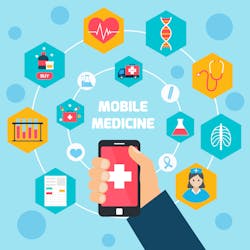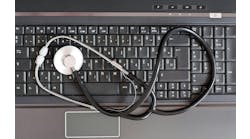An evaluation of 137 patient-facing mobile health (mHealth) apps revealed subpar findings, including that few apps address the needs of the patients who could benefit the most, according to research in December’s issue of Health Affairs.
Researchers from University of Michigan Medical School, the Department of Medicine at Brigham and Women’s Hospital, and elsewhere noted that key stakeholders, including medical professional societies, insurers, and policy makers, have largely avoided formally recommending apps, which forces patients to obtain recommendations from other sources. As such, the researchers evaluated apps that were intended for use by patients to manage their health, that were highly rated by consumers and recommended by experts, and that targeted high-need, high-cost populations.
They found that there is a wide variety of apps in the marketplace but that “few apps address the needs of the patients who could benefit the most. “We also found that consumers’ ratings were poor indications of apps’ clinical utility or usability and that most apps did not respond appropriately when a user entered potentially dangerous health information. Going forward, data privacy and security will continue to be major concerns in the dissemination of mHealth apps,” the researchers stated.
To identify apps that target high-need, high-cost populations, the researchers conducted a systematic search for mHealth apps in the Apple iTunes (iOS) and Google Play (Android) app stores. They also systematically searched for app suggestions on medical professional society websites. They further solicited recommendations for apps through telephone interviews with experts in mobile technology, vulnerable populations, and patient advocacy, and then identified additional health apps based on personal experience. Each selected app was assigned for review to both a clinician and a non-clinician. Apps available for both iOS and Android were reviewed on both platforms.
The app analysis focused on nine variables: the target population for each app; each app’s types of functionality related to patient engagement; app store rating; clinical utility; usability; the app’s reactivity to information that could indicate health danger; the presence of a privacy policy; the mechanism of data sharing; and the cost model. Many apps were designed to serve multiple high-need, high-cost populations, and eleven of them were deemed general enough to be useful across all such populations.
Of the most noteworthy findings, the researchers found that of the 121 apps that allow patients to record health-oriented information, only 28 (23 percent) responded appropriately when information was entered that indicated a health danger, such as suicidal mood or ideation. For only three target populations—people with a history of stroke, those with asthma or chronic obstructive pulmonary disorder, and the elderly—did at least 50 percent of the apps react appropriately to relevant health information.
What’s more, nearly all of the apps for each of the high-need, high-cost populations included some functionality to track or record and to display or summarize user-entered information, and many apps provided educational information and reminders or alerts All of these functionalities are likely to be useful to patients with relatively low levels of engagement. In contrast, very few apps focused on providing guidance based on user-entered information or support through social networks, or on rewarding behavior change—functionalities likely to be useful to relatively more engaged patients, the research concluded.
In terms of secure data sharing, 15 apps (11 percent) enabled data sharing with Apple’s HealthKit, 14 apps (10 percent) enabled users to create a separate log-in for recipients of shared information, five apps (4 percent) enabled data sharing with Google Fit, and 1 app (less than 1 percent) enabled users to submit information directly to their electronic health record (EHR). The absence of secure data exchange is a concern because only 88 (64 percent) of the reviewed apps had a privacy policy, the researchers concluded.
Based on their findings, the researchers offered the following recommendations to organizations interested in assessing the value of apps for specific patient populations:
- Involve clinicians and patients in the review process
- Tailor recommendations based on engagement level
- Require crisis management standards
- Require secure data exchange
According to the researchers, the results suggest that the marketplace of mHealth apps targeting high-need, high-cost populations is maturing and is diverse enough that medical professional societies and patient advocacy groups should give serious thought to how apps may be used to benefit specific patients. Still, they said that there are many gaps in the apps and substantial room for improving them. “Consumer app ratings represent a good place to start for identifying high-quality apps, but such ratings should be supported by clinician and patient input on clinical utility and usability. While the app industry needs to do further work to meet basic safety and privacy standards, a subset of apps already conform to these standards. Policy makers need to consider how to encourage app developers to build apps that respond appropriately to dangerous information entered by users,” they concluded.


